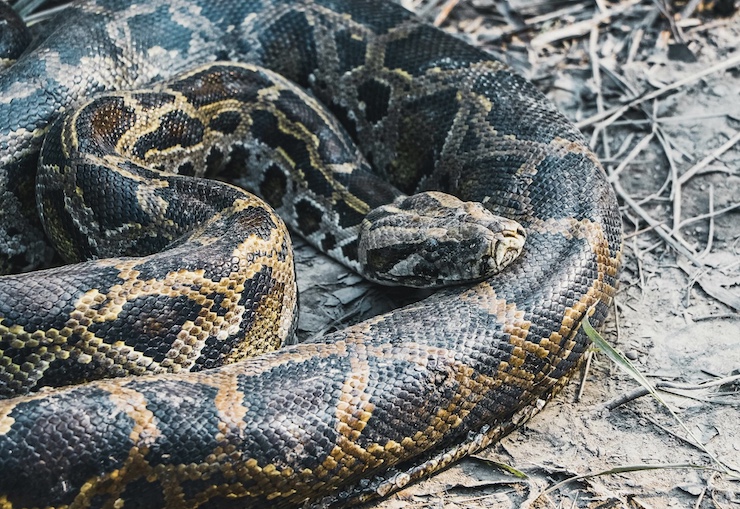Florida Uses Drones to Fight Back Against Python Invasion

Native to Southeast Asia, the Burmese python is one of the largest snake species in the world. In their natural habitat, this constrictor has been listed on the International Union for Conservation of Nature (IUCN) Red List of Threatened Species since 2012. Due to habitat loss and over-harvesting, conservationists estimate that wild Burmese python populations have declined by 30%, designating the species as vulnerable. However, in the United States, the Burmese python population tells a very different story.
Beginning in the mid-1990s through the early 2000s, Burmese pythons became extremely popular as pets in the U.S., especially in Florida, with more than 90,000 hatchlings imported into the country. Unfortunately, many pet owners were ill-prepared for snakes that can grow 15-20 feet long and weigh up to 150 pounds. Rather than relinquishing these pets responsibly, many owners released them into the wild. Additionally, several reptile breeding facilities and zoos in Florida were damaged during Hurricane Andrew in 1992, which resulted in the accidental release of a large number of pythons into the wild.
These snakes quickly established a foothold in Florida’s Everglades, where they thrived thanks to year-round food availability and few natural predators beyond adult alligators. As apex predators, Burmese pythons have caused dramatic declines in native species such as raccoons, opossums, bobcats, and several endangered birds. They have even been known to prey on deer and alligators. The loss of these animals disrupts the natural balance of the Everglades, affecting the survival of other predators and altering plant regeneration processes.
In 2012, the importation of Burmese pythons into the U.S. was banned under the Lacey Act. Florida has been actively engaged in python eradication programs for over two decades. In 2013, the Florida Fish and Wildlife Conservation Commission, the Fish and Wildlife Foundation of Florida, and the South Florida Water Management District launched the hugely popular Florida Python Challenge, inviting both professional and amateur hunters to join the fight against the invasive species.
For ten days, participants compete to capture as many Burmese pythons as possible, with top prizes of up to $2,500. The 2022 Python Challenge set a record with the capture of 231 snakes. In 2017, Bill Booth, winner of the 2016 Python Challenge, revolutionized python detection by teaming up with Miami-based drone startup VolAero to use thermal imaging drones to locate pythons in the wild.
One reason python capture is so difficult is their ability to camouflage perfectly with their environment. However, as Bill demonstrated, even small snakes are no match for thermal imaging. “Using a thermal drone is like having X-ray vision,” he said. “Even if a snake is 16 inches long, camouflaged, and not moving, the drone can help us see it.” Since then, Florida biologists and conservationists have increasingly relied on drones to help protect the Everglades.
In 2020, legislation was passed in Florida to allow broader drone use by wildlife agencies to track Burmese pythons in the Everglades, an area where drone operations had previously required special waivers. The Conservancy of Southwest Florida has partnered with state agencies and researchers from Embry-Riddle Aeronautical University and other local institutions to combine drone technology with other conservation strategies. For example, the Conservancy outfits male scout snakes with radio trackers. When a tagged male encounters a female, researchers are able to locate and remove the breeding female, potentially stopping a brood of up to 100 eggs from hatching.
Mike Kirkland, Python Program Manager at the South Florida Water Management District, explained that while helicopters were previously used to track these scout snakes, the cost was prohibitively high. Using drones to follow radio signals allows the Conservancy to redirect funds toward more effective strategies. “Every single python that’s removed is positive for the environment,” Mike said. “As with most environmental issues, a multi-pronged strategy of different efforts working in concert with one another is really the best path forward.”
The Conservancy recently announced that the combination of drone and radio tracking technology led to the largest single-season haul of Burmese pythons on record. They reported capturing an astonishing 6,300 lbs of snakes across a 200-square-mile area. “In the future,” Mike said, “I see the python population being greatly reduced, and to a point where we can begin to see a robust return of our native animal populations, which is why we’re doing all this to begin with.”
|